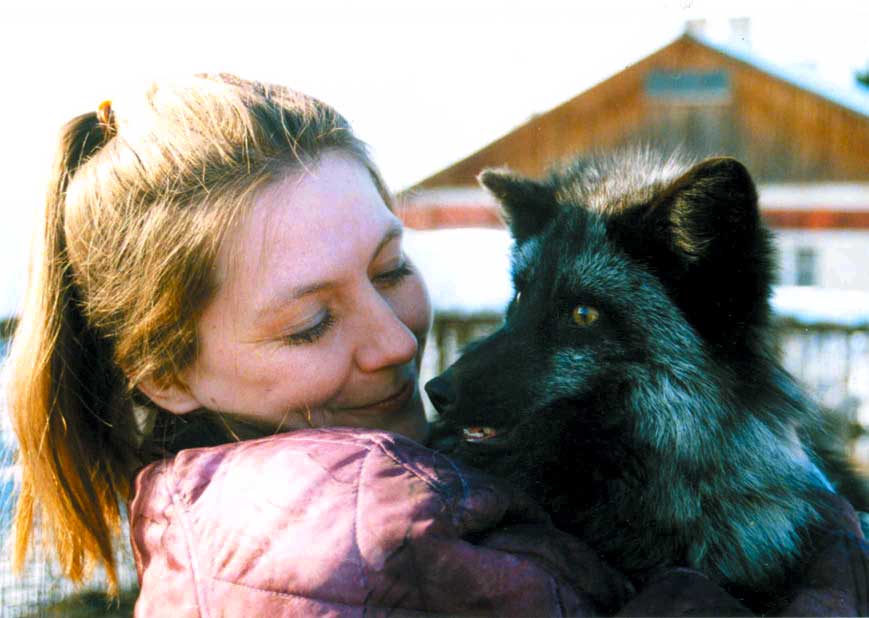
 |
Freethought & Rationalism ArchiveThe archives are read only. |
|
|
#1 |
|
Veteran Member
Join Date: Oct 2001
Location: Kansas City, MO
Posts: 1,877
|
How long do you think it would take, breeding say, cats or dogs, to arrive at a critter that doesn't look much like a cat or a dog and cannot be bred with "ordinary" cats or dogs?
I realize that many dogs don't look much at all like their wolf ancestors, and that breeds like Great Danes and Chihuahuas not only look incredibly different but are physically incapable of mating with each other, but nevertheless they can still be interbred in a laboratory. It seems like the only thing that might possibly convince creationists and IDists of macroevolution is to take a familiar animal and breed a recognizably different species from it. Doing this with flies or plants won't cut it. These people want to see dogs become something that not only can't breed with dogs, but looks a whole lot different than dogs Perhaps an aquatic animal with flippers. I think that would be the only way to make them see that there's no magic mechanism keeping species from evolving beyond certain bounds. Would doing something like this take decades, centuries, or millennia? |
|
|
|
|
#2 |
|
Banned
Join Date: Feb 2004
Location: UK
Posts: 2,179
|
For a start a whole bunch of them would say it didn't count because humans were involved (or even that it proved intelligent design)! However, most of those will also be completely ignorant of the fact that humans invented many other things they attribute to god - from dogs to bananas to grains like wheat, barley, rice and maize.
It would probably take somewhere between decades and centuries these days just to get permission to do such a thing and deal with the animal rights activists. Then, even choosing a relatively short life-cycle mammal and getting to "cheat" with human selection and intervention, it would still take millennia to produce something significantly different enough (remember those goal posts are going to keep moving whatever you come up with) - by which time anyone you were trying to prove it to would be dead. |
|
|
|
|
#3 | |
|
Senior Member
Join Date: Jan 2004
Location: Brazil
Posts: 530
|
Something similar has been attempted with foxes, in Russia.The objective of the study was to select for "tameness" - in which it succeeded - but also produced some physical by-products, like foxes that looked more like weird dogs (floppy ears, upturned tail, white areas in the chest, and that would whimper and wag their tails!) than the original fox. And the experiment has been going on for decades, only. Who knows what will happen if one keeps breeding and selecting these foxes for another hundred years?
Quote:
|
|
|
|
|
|
#4 | |
|
Contributor
Join Date: Mar 2003
Location: outraged about the stiffling of free speech here
Posts: 10,987
|
Quote:
 Dr.Xu: Unfurtunately, the pictures at this site don't work (for me). Do you know where to get other ones? |
|
|
|
|
|
#5 |
|
Senior Member
Join Date: Jan 2004
Location: Brazil
Posts: 530
|
Sven
I couldn't see the pictures on that site either.  I googled for "domesticated fox", and found only this picture:  We can't really tell from this that the tame fox is different from a wild one, but I remember seeing a documentary on TV about this project, and the fox on film had the white chest, upturned, wagging tail, a coat color that looked shaggy when compared to the other foxes*, and it was whimpering and licking the caretaker's hand. *The original foxes were part of a fur industry breeding facility - the ones that would be turned into coats has amazingly homogeneous, lustrous fur. |
|
|
|
|
#6 | |
|
Contributor
Join Date: Mar 2003
Location: outraged about the stiffling of free speech here
Posts: 10,987
|
Quote:
|
|
|
|
|
|
#7 |
|
Veteran Member
Join Date: Jun 2001
Location: Roanoke, VA, USA
Posts: 2,646
|
Awwww, what a cute widdle foxie!
 NPM |
|
|
|
|
#8 | |
|
Veteran Member
Join Date: Jul 2001
Location: Seattle
Posts: 4,261
|
Quote:
scigirl |
|
|
|
|
|
#9 |
|
Senior Member
Join Date: Aug 2002
Location: Detroit, MI
Posts: 967
|
They talked about the foxes once on NOVA, when explaining why Dogs look so much different than wolves, and why different breeds look so different. I'm going from rather fuzzy memory here, but I beleive they said that the essential difference genetically isn't in genes that control things like ear formation (dogs tend to have floppy ears, wolves don't) but in the genes controlling hormones associated with tameness (e.g. adreneline(sp?)) So the physical characteristics of dogs (ears, splotchy coats, etc..) are not a result of humans selecting for those features, but simply a developmental byproduct of being domesticated. They used the fox experiment to show how selecting for tameness, results in foxes developing many characteristics we see in modern dogs.
|
|
|
|
|
#10 | |
|
Veteran Member
Join Date: Oct 2001
Location: Kansas City, MO
Posts: 1,877
|
I've heard somewhere that dogs are like immature wolves. Adult wolves don't bark, for example, but wolf pups do.
Quote:
|
|
|
|
| Thread Tools | Search this Thread |
|